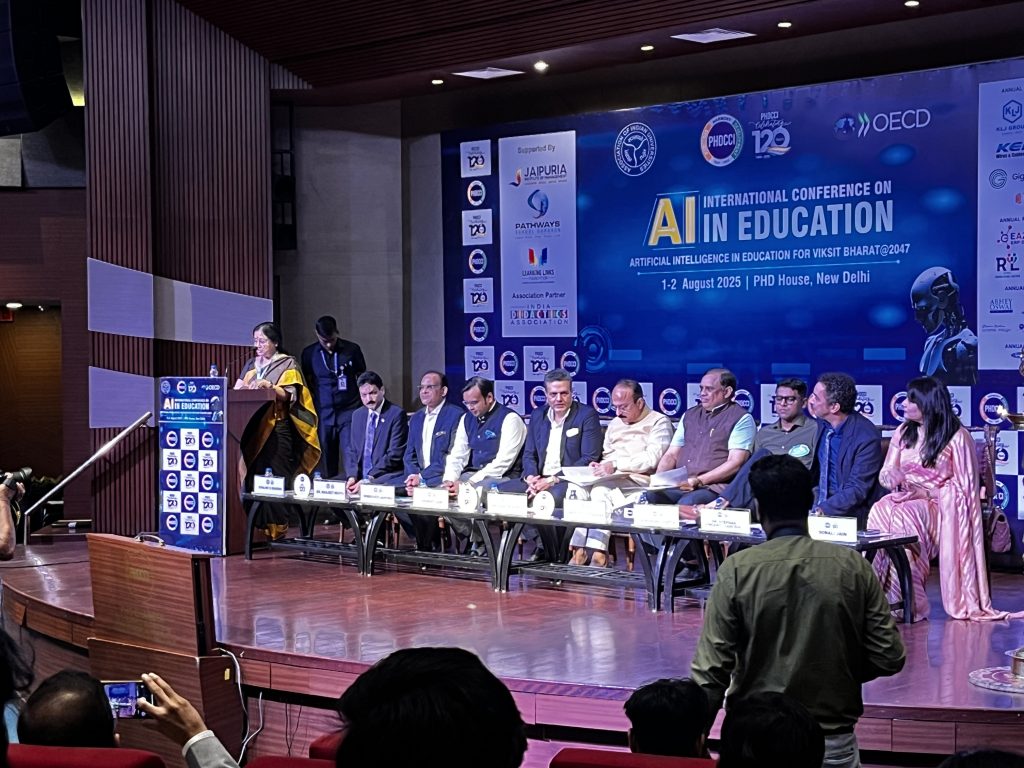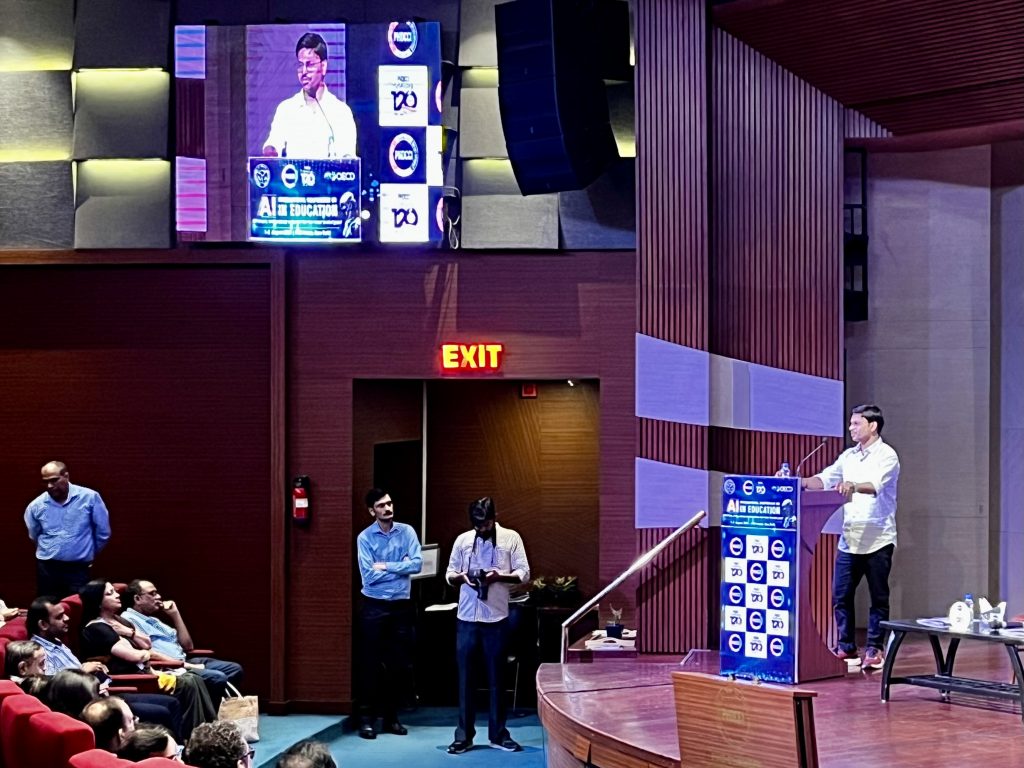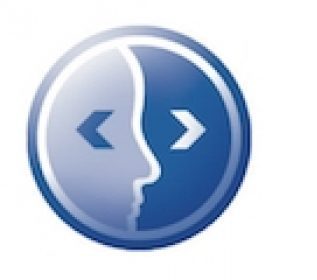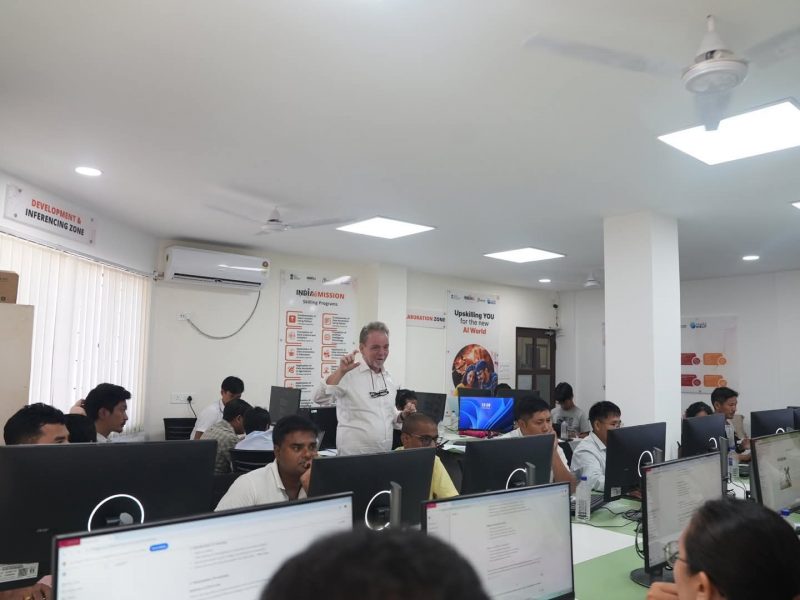Indian Perspectives on AI in Education: A Shared Set of Challenges
How can artificial intelligence transform education – and what does that transformation look like in practice? The „International Conference AI in Education for Viksit Bharat @2047“ at August 1st, 2025, brought together educators, policymakers, researchers, and students to explore the promise and pitfalls of AI in classrooms, curricula, and campus life. The discussions offered valuable perspectives that go far beyond the local context – pointing to global tensions between digital ambition, institutional readiness, and the social fabric of learning.
A Multi-Stakeholder Forum Exploring India’s AI Education Strategy
The conference organised by PHDCCI in collaboration with Paris-headquartered OECD and Association of Indian Universities (AIU) explored the role of artificial intelligence (AI) in the Indian education system, covering a broad spectrum from primary education to universities. As a participant-observer, I found the discussions rich in ambition and insight, while also revealing the practical and structural challenges that accompany AI integration in education – challenges by no means unique to India. The event featured contributions from policymakers, educators, researchers, and technology providers. The OECD presented recent studies that highlighted the transformative potential of AI for learning, assessment, and educational management. A recurring theme was the crucial role of teacher professional development and the need to form strong partnerships for implementing change. Overview of the full program provided by the booklet you’ll find here.

Between Vision and Implementation: The Gaps in Readiness
Many participants emphasised that AI is not a fleeting trend but a fundamental shift that demands long-term planning, policy alignment, and institutional readiness. However, the path to implementation is anything but straightforward. Questions around data privacy, infrastructure, cost, and curriculum flexibility surfaced repeatedly. While these are often framed as technical problems, the deeper issues are systemic – and resonate globally. Although the keynote speaker and panelists were of high importance, I somewhat missed a signal for stronger commitment to the audience as key stakeholders in implementation and multipliers.
Techno-Optimism vs. Practical Realities
One of the more prominent voices at the event was Rajeev Makhni a well-known technology journalist and digital evangelist from the major media outlet NDTV. His keynote took a decidedly techno-optimistic stance, portraying the evolution of AI as an inevitable force that would soon overcome today’s obstacles such as energy consumption and cost. His rhetoric, though inspiring to some, framed AI as a singular historical rupture and tended to gloss over the real constraints and concerns expressed by educators and practitioners. From my point of view, this kind of narrative, which amplifies promise while downplaying risk, can inhibit meaningful dialogue about implementation realities.
Classroom Use Cases and the Role of Human-Centered Competencies
In a panel on classroom applications of AI, more grounded perspectives emerged. Several speakers pointed out that education has always had a contested relationship with technology. What matters now is to focus on distinctly human capabilities – creativity, critical thinking, and interpersonal skills – which machines are unlikely to replicate meaningfully. At the same time, it was acknowledged that generative AI may exacerbate known weaknesses in education systems. The panelists called for system-level responses rather than isolated fixes. Topics such as data protection, flexible curricula, and inclusive access to AI tools featured prominently. Case studies from various schools illustrated how institutions are experimenting with AI in both instruction and administration. For instance, Blue Bells International School and Sanfort World School have fully integrated AI into classroom activities, school monitoring, and digital infrastructure. While innovative, these models raise questions about scalability and the transferability of private-sector practices to the public education domain.
The Missing Layer: Social Meaning and Student Voice
A particularly noteworthy intervention came from a student representative, who introduced a dimension often missing from AI debates: emotional and social experience. He argued that many students today are missing a sense of meaning and community in their learning journeys. As a result, always-available AI chatbots are gaining emotional significance as trusted companions – not just tools for information retrieval. This perspective offered a subtle but important reminder that digital transformation intersects deeply with human needs.

Institutional Innovation and Structural Barriers
Structural issues – including funding shortages, outdated infrastructure, and rigid curricula – continue to hinder AI adoption across the board. These are not technological deficits per se, but policy and investment gaps that apply in many parts of the world. The event concluded with a presentation from IIT Bombay, showcasing a research initiative on AI-supported feedback systems for educators. This project exemplifies how AI can serve pedagogical innovation when embedded in research-informed development. Dr Rajul K. Gajjar, Vice Chancellor of Gujarat Technological University (GTU) presented its institutional strategy for AI rollout, which included a mandatory training program for all staff and faculty – a promising example of institution-wide capacity-building.
Moving Forward: Collaboration Is Key
In summary, the conference reflected both the excitement and the complexity surrounding AI in education. It showcased bold visions, but also revealed how much work remains to be done in aligning technology with pedagogical goals, ethical standards, and the day-to-day realities of learners and teachers. What was clear is that these challenges are shared – and any global progress on AI in education will depend on how collaboratively we are willing to address them.



